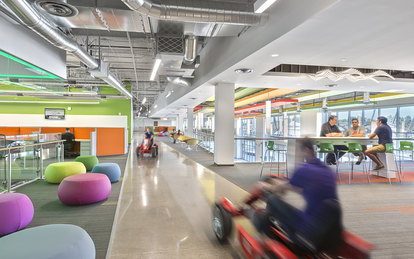The Rise of Human Capital and Engagement

The Evolving Employee
In the not-so-distant past, human capital was defined in limited, objective terms. The benefits in terms of effectiveness, agility, and culture were part of an intangible class of assets. In the contemporary workplace, there is now a serious focus on employee engagement, pushing human capital into a more holistic definition that takes into account the ways in which an individual worker is the essential component of organizational performance. Rex Miller, our guest speaker for the meeting, pointed out in his book Change Your Space, Change Your Culture that people are the most powerful untapped potential in the workplace. Today, human capital is defined as the human potential, accumulated knowledge, creativity, and cultural strength that a company can leverage to move forward. Though we have seen and participated in this shift for some companies, we were still surprised at what we learned from our Client Advisory Board’s spectrum of 16 companies, ranging in size from Fortune 10 to regional charitable organizations.
This year, the meeting took place at GoDaddy — a workplace environment packed with energy, fun, and innovation. Honestly, when we arrived at GoDaddy we thought one thing about human capital — which its raw force is what unleashes a company’s potential. However, we came out the other side realizing the true indicator of the potential around human capital is an organization’s ability to adapt, and specifically, to navigate change management.
This piece represents our best attempt to take you on our journey and hear from the many voices at the table.